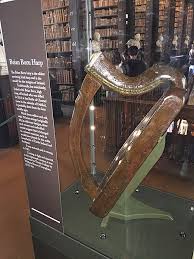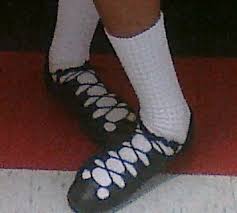Song in the Irish Language / Traditional Dance Music


Until the end of the Middle Ages ‘Bardic’ music of the Harpers (Cruitire) accompanied the poets (filí ) verses through-out Ireland. The oldest airs preserved were contained in a a manuscript of Fitzwilliam’s Virginal Book also a collection bound together in William Ballet’s Lute Book of the sixteenth century. During 1726 a first collection A Call of the Most Celebrated Irish Tune’s was published by John & William Neale (Christ Church Yard Dublin ) that contained forty-nine airs. The sole surviving copy is held among Bunting’s manuscript at Queen’s University College, Belfast. Thomas More adapted several of Bunting’s airs to his own lyrics. During 1851 George Petrie (1789-1866) was instrumental in founding The Society for the Preservation & Publication of the Melodies of Ireland that issued his Petrie Collection of the Ancient Music of Ireland’ during 1855 with one hundred forty – seven airs with copious notes both historical & analytical. The collection contained spinning tunes, lullabies, plough tunes, various songs or airs. He included dance tunes also harpers compositions. Francis O’ Neill published Music of Ireland in 1903 that contained one thousand eight hundred & fifty assorted music scores i.e. airs, jigs, reels, hornpipes, long dance marches. During 1907 he published a book of one thousand & one tunes. His publication Irish Minstrels and Musicians appeared during 1913. He followed this with four hundred piano tunes also violin in 1915. O’Neill’s Waifs and Strays for Gaelic Melodies contained three hundred & sixty-five melodies published during 1922. [i]
Sean-Nos
Sean-Nos refers to ‘in the Old Style’ at the heart of Irish music. It is an unaccompanied singing style of immense beauty also complexity from a top of the range form. It is believed to have derived from the bardic tradition that ceased during the seventeenth century. [ii]
Sean-Nos is generally understood to refer to Irish language songs while the term ‘Traditional Song’ means songs sung in the English language. Sean-Nos is a singing style rooted within the Gaeltacht regions of Ireland. Three styles are sung with the obvious differences between the Ulster style compared with the Connacht or Munster style. Within Donegal it was very heavily influenced by Scots Gaelic songs that are much less ornamental also may contain a steady pulse. Both the Munster & Connacht styles are highly ornamented with forms familiar to a traditionalist instrumentalist also with more complex forms. [iii]
This style is highly demanding for the performer and audience. It requires the former’s skill to vary the Interpretations of each verse by means of subtle changes in tempo, ornamentations, timbre & stress, while the latter has to possess the knowledge also the discrimination to appreciate fully the singer’s efforts. Melodic richness is best emphasized in a ‘poor ’ harmonic framework i.e. a melodic line loses its own flavour if it comes about within a parallel harmonic shift. This is true of modern music also as arrangements have been displayed in various ways, either as published scores or harmonized melodies. At certain times both options are combined with harmonizing as the latter. [iv]
Traditional Dance Music
A fourteenth century song from the South of England invited the audience to ‘Come ant daunce wyt me in Irlaunde.’ (Brennan 1995 page 15) Traditional dance evolved from the French quadrille & English country dancing during the eighteenth & nineteenth centuries. The first Irish dancing documentary appeared with a Mayor of Waterford’s account of his visit to Baltimore in Co. Cork during 1413 when attendees ‘took to the floor’ to celebrate Christmas Eve. (Ó h’Allmhurain 2017 page 16) By the end of the seventh century dancing was accompanied by bagpipes, or Jew’s harp. When the fiddle was introduced by 1760’s a new class of dancing master emerged. [v]
Sets & half-sets were popular during the eighteenth & nineteenth centuries. Céili bands were formed possibly in response to the Gaelic League’s creation of dance during the early twentieth century. Irish music structure in the past consisted of 2/8 bar phrases called parts usually repeated or sub-divided into 2/4 bar sub-phases. A typical form may be aabb usually repeated. Several tunes may have three or four parts. [vi]
Irish music is a fluid iconic tradition handed down from one generation to the next or passed on from one performer to another that changes each time it is performed. [vii]
Comhaltas Eireann
Cumann Ceoltóiri hEireann was founded during 1951 in Mullingar, Co. Westmeath by a group of traditional musicians; it changed its name to the present Comhaltas Eireann during 1952. [viii]
Local Dialects
From 1954 traditional music was accorded a definite mode by the International Folk Music Council. That music comprised of two broad categories; instrumental music; mostly consists of dance music; reels, jigs, hornpipes etc secondly the song tradition; is unaccompanied solo singing known as Sean Nos. Several various phases within traditional music with local dialects within the country i. e. Donegal’s music is vastly unique compared to the Cork’s music. One feature of traditional music is its capacity for absorption, retention & change drawn on various sources or influences. There has been a fashion for the remaking of traditional dance tunes from such material as theme songs from musicals. The Group De Dannan produced a hornpipe from the Beatle’s ‘Hey Jude’ thus made the absorption an ‘Irish’ flavour. [ix]
Soft Shoe Styles
Irish traditional music is relevant for dance movements with tunes that range from four-to-the-bar-reels to various jigs. There are soft shoe styles i.e. reels, slip-jig, light- jig also single-jig, or light single jigs in 6/8 style. Most jigs are in 6/8 with an older style in 9/8 known as a slip-jig. [x]
Hard Shoe Styles
Hard shoe styles are hornpipes in syncopated 2/4 or 4/4 time, the treble jig is in a slow 6/8. Most dance tunes favour modal tuning & circular construction in which two different strains of eight bars are each played through twice followed by the resulting thirty – two bars repeated from the top. Each dance set consists of two or more tunes performed sequentially. Seven basic steps are required to be mastered prior to a dance called a reel. A wealth of styles from marches, waltzes, jigs, reels, hornpipes, slip-jigs & polkas provide a rich variety or flavour to all dance music. [xi]
Tempos
The Irish reel is of Scottish origin; written in 4/4 time it may be played in 2/2 with two steady beats in each bar. The hornpipe is the slowest dance. Several set-dances are hornpipes. Characterized by dotted rhythm triples also three strong crotchets in each section’s last bar. Polka is associated with the Sliabh Luchra area of west Munster. It is in 2/4 time with a very fast tempo. [xii]
Factors that shape Irish Tradition include:
- Continuity that links the present with the past.
- Variation that springs from the individual or the group.
- Selection by the community, that determines the form or forms in which the music survives. [xiii]
YouTube video of 10th November 2017 by Morten X may be viewed at this link: https://www.youtube.com/watch?v=XdxGhKbdjxU
Footnotes
[i] Irish Music Collectors (https://comhaltas.ie/music/treoir/detail/irelands_music_collectors/) [Assessed 10th August 2018]
[ii] Irish Traditional Music (https://en.wikipedia.org/wiki/Irish_traditional_music) [Assessed 10th August 2018]
[iii] Irish Music Collectors (https://comhaltas.ie/music/treoir/detail/irelands_music_collectors/) [Assessed 10th August 2018]
[iv] Irish Traditional Music (https://en.wikipedia.org/wiki/Irish_traditional_music) [Assessed 10th August 2018]
[v] Traditional Irish Dance Music (https://leavingcertmusic.weebly.com/traditional-irish-dance-music.html) [assessed 10th August 2018]
[vi] Ibid
[vii] Tuition (https://www.newschool.ie/tuition/) [Assessed 10th August 2018]
[viii] Ibid
[ix] Irish Dance (https://en.wikipedia.org/wiki/Irish_dance) [Assessed 10th August 2018]
[x] Ibid
[xi] Ibid
[xii] Traditional Irish Dance Music (https://leavingcertmusic.weebly.com/traditional-irish-dance-music.html) [Assessed 10th August 2018]
[xiii] Irish Dance (https://en.wikipedia.org/wiki/Irish_dance) [Assessed 10th August 2018]







No Comments
Add a comment about this page